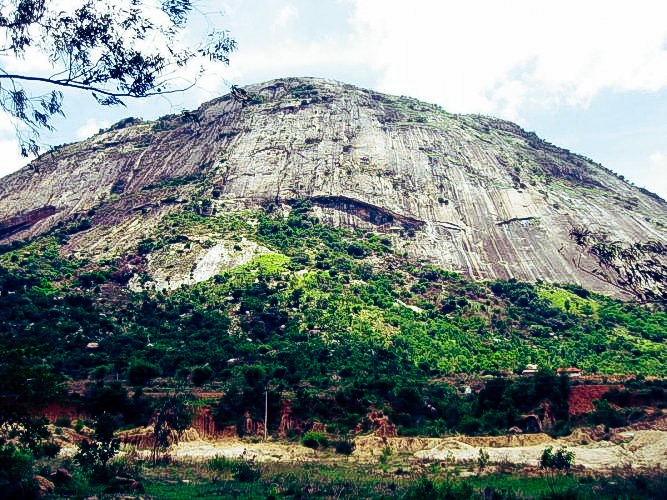Bangalore’s own little hill-station
Nandi hills needs no introduction to a lot of people from Bangalore. Ask any Bangalorean a quick getaway location away from the city for a day trip and viola, ‘Nandi hills’ is the place most suggested.
To a lot of people it is just a small little hillock best enjoyed for its cool weather along with beautiful sunrise/sunset, having the remains of the fort built by the 18th century ruler Tippu Sultan. There is a certain truth to that statement, but there is more to it than that.
Quite recently I decided to explore this place. We were 3 of us who set off at 7am in the morning from South Bangalore, covering a distance of approx. 70kms in 2.5hrs. This included a quick breakfast stop in between, in a place called Sri Krishna Garden, where some idli, vada, kara bath and puri did the job of filling us up with carbs for what was to come ahead.
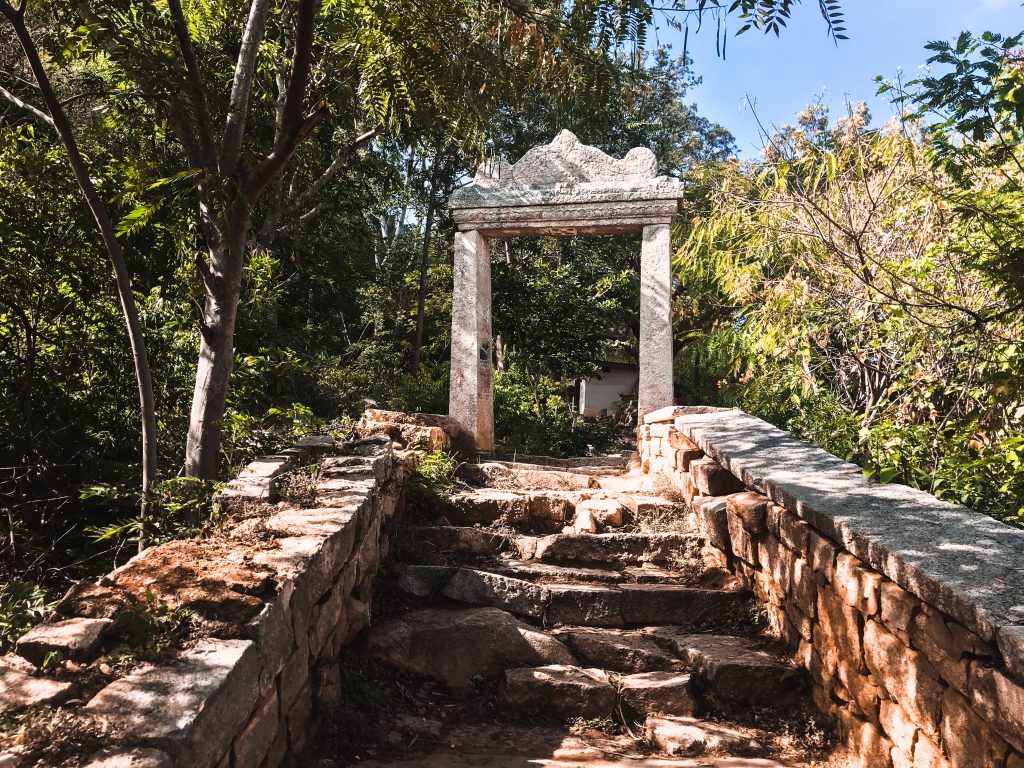
Most people drive up to the hills. But our plan was to trek up using the old stairway, used during Tippus time. So instead of taking the left turn on the Nandi hills road, we took a right and headed to Sultanpet for the starting point of this trek. Google map shows this as ‘Nandi hills trek starting point’ but we took the help of locals in finding the direction the old – fashioned way.
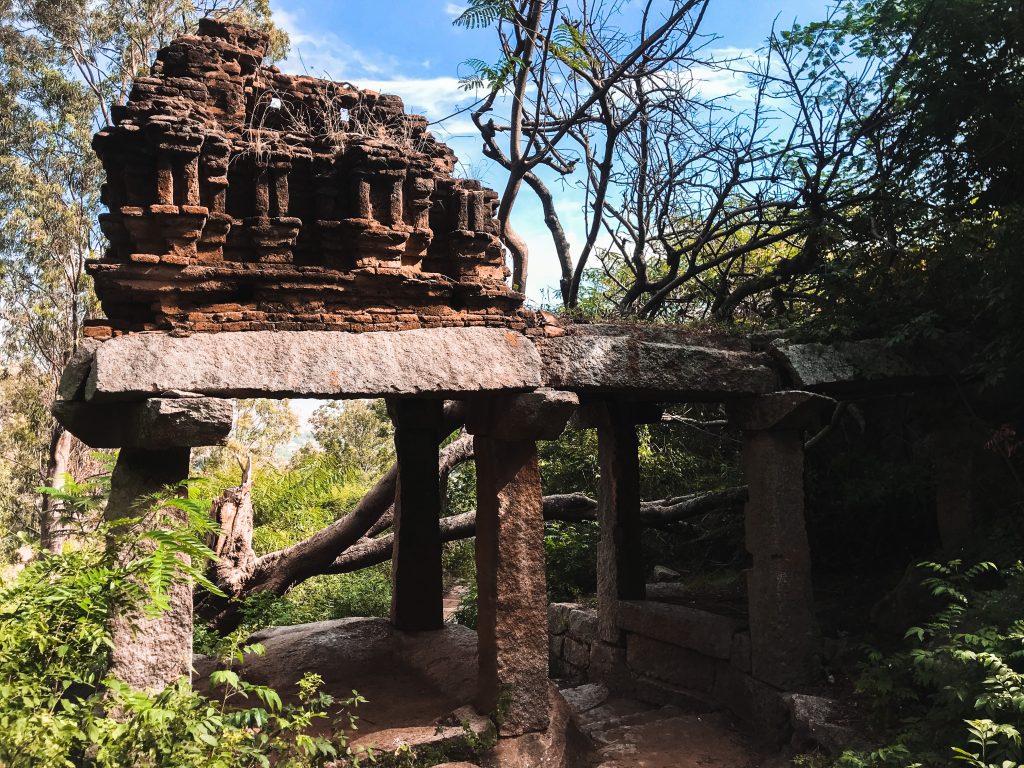
On reaching the foothills of the trek point at 9.30am, we set off on foot climbing the stairs which is relatively easy but takes around an hour to reach one of the fort entrances. The trek itself was a pleasant one, where we pass through few resting points along the way made of granite stones which look old. The path is well shaded with a lot of trees and pleasant breeze to counter our sweat, and beautiful view points along the way to treat our eyes.
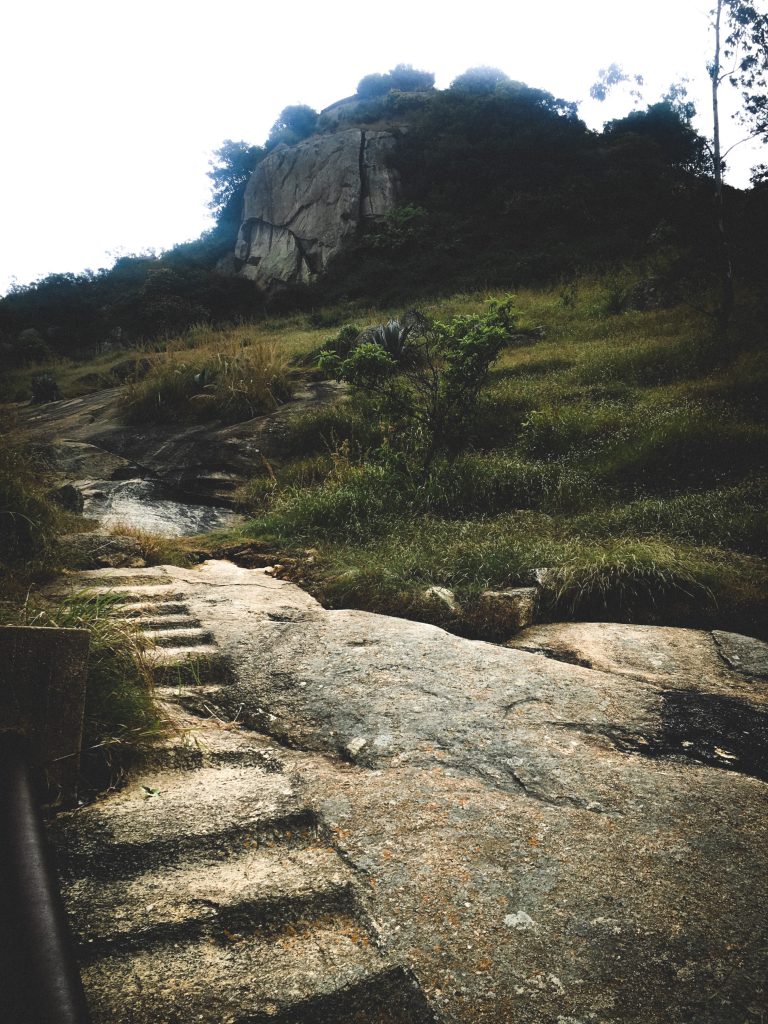
On entering the fort walls we first pass through a small Shiva temple called Sri Gavi Veerabadhra Swamy temple which is inside of a small cave formation. The priest told us that the temple is an old one dating to more than 500 years back. Continuing further we come across Tippu’s rest house which is a two – storey red building, which the Sultan used often during his glory days.
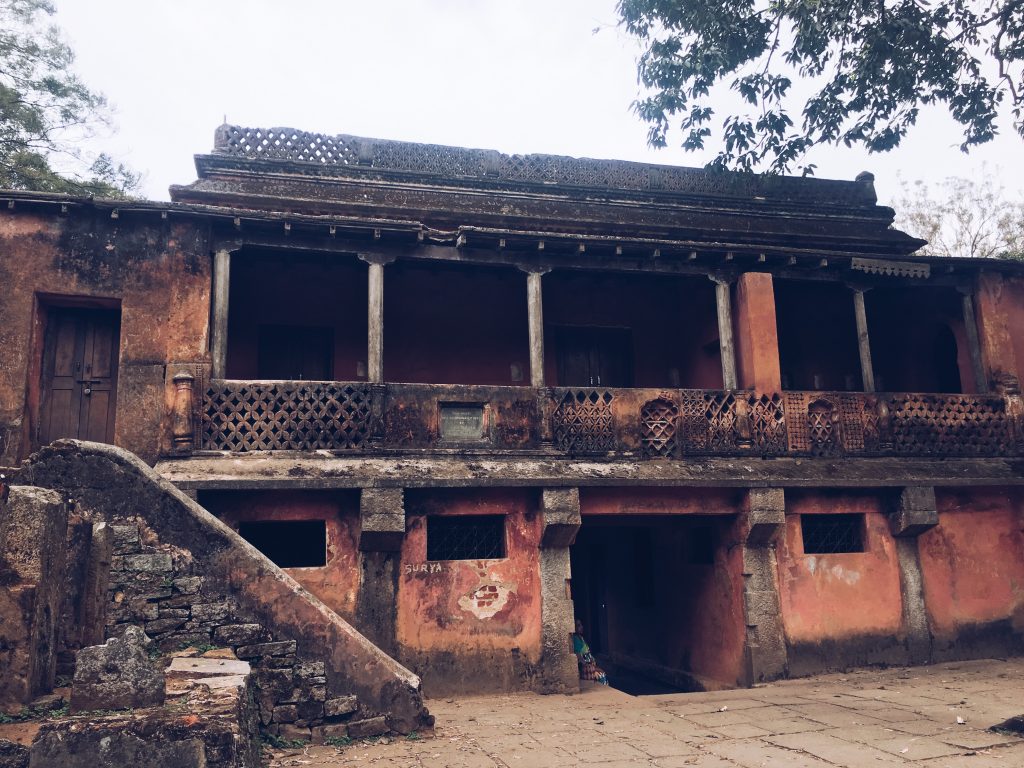
Further up we came across the Amrutha Sarovara, a step well reservoir built in 1928 and if you spend some time here looking at the water you can see big orange fish jump out of the water, which is quite fascinating. It is also a great spot for taking pictures, and the reason why a couple were dressed elaborately for what seemed to be a pre-wedding photoshoot accompanied by their photographer.
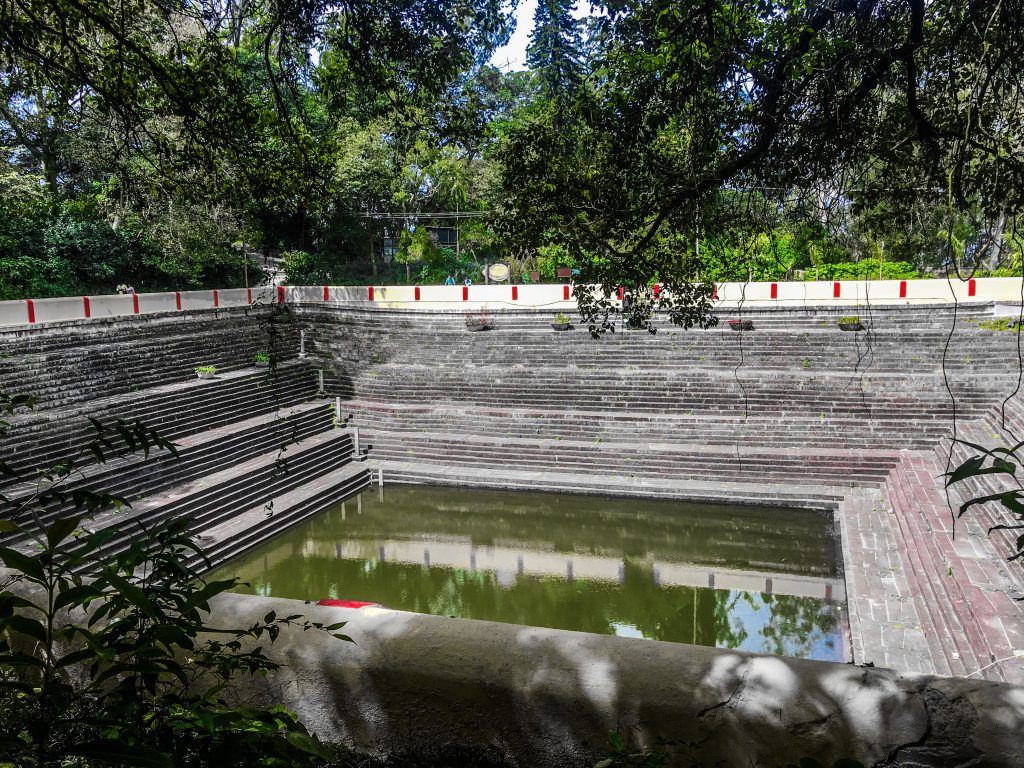
While trying to get around the step-well we discovered a spot right behind it, which often misses the visitor’s eye. The entrance to this was quite tricky, and we really had to break a few rules to get across the fence to this place, and boy was it worth it! It looked like a place out of a fairy tale, where a small path, above which there was tree branches hovering over, led to a small statue of a Nandi and an even smaller one beside it, looking over at the Amrutha Sarovara.
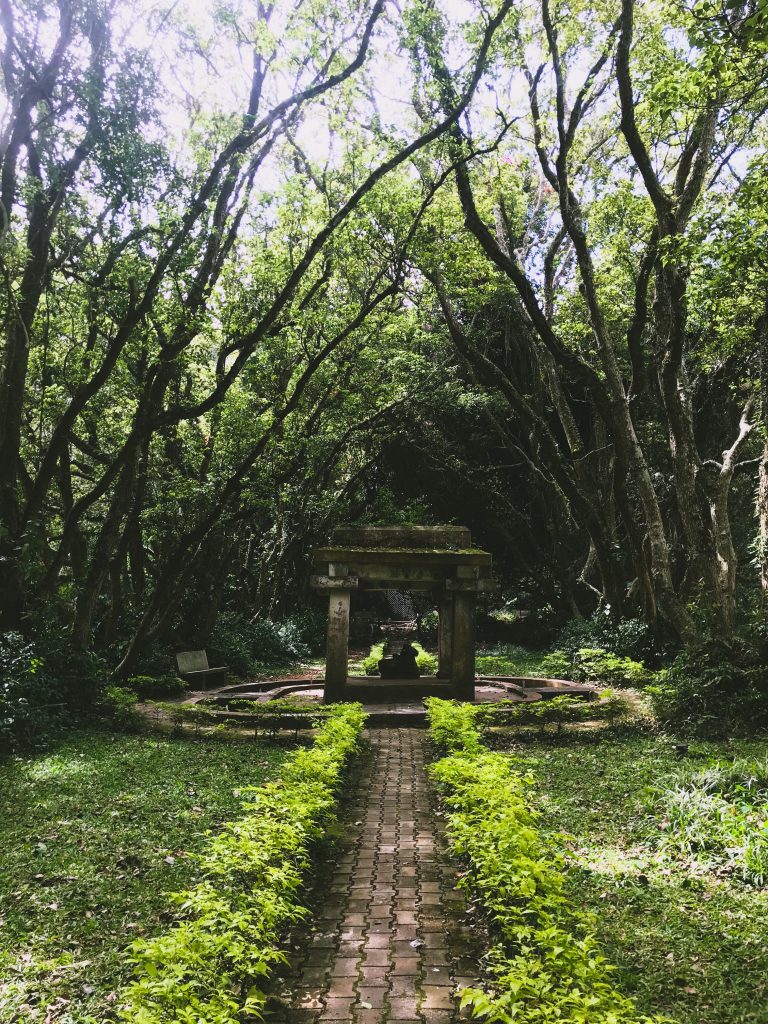
Soaking in the vibes of this magical place we walked further up the hills and made a climb towards Tippus drop point and although we did not go all the way towards it, the views from here are quite nice. On a summer day this would be very hot place, being a barren rock with no trees in sight. Walking up, this boulder formation gives way to old stone steps that goes up to the Yoganandeeshwara temple. This is an old Shiva temple dating back to 1000 years, which represents his final renunciation stage (his childhood, youth and married stage is depicted in the beautiful Bhooganandishwara temple at the base of Nandi hills). We spent a bit of time here looking around the temple, where you can see carvings on the granite flooring, inscriptions on the entrance wall and even a small step well inside the temple premises.
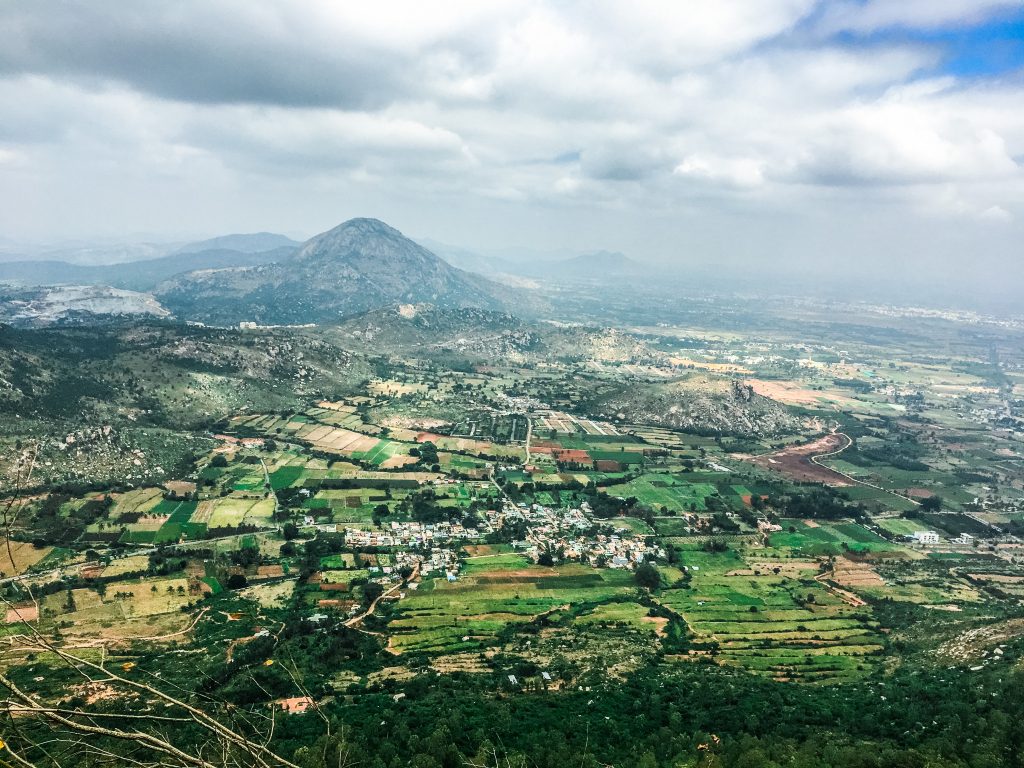
A glass bridge near Hotel Mayuri, is where you can see lot of tourists hovering over for the view point. There are quite a few monkeys in this area too, and we spotted one on this bridge, eating away some ice-cream reluctantly given away by a tourist, who anticipated some trouble if he hadn’t. Hotel Mayuri located besides the bridge is the only proper sit down restaurant on the top where you can grab some lunch, and although the food isn’t so great, the view from here, certainly is! There are a few smaller tea/coffee shops that serve some quick fast food and snack items.
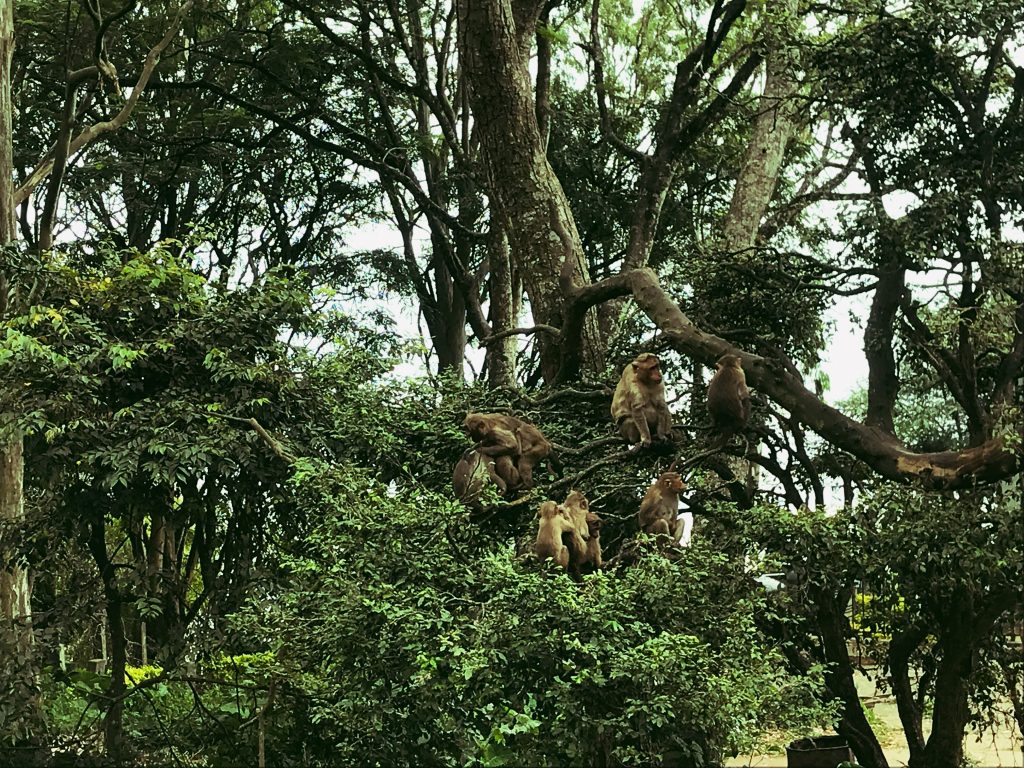
After lunch we took the small pathway towards the fort walls and walked around a little getting lost, but finally reached the point which happened to be the source of the river Palar. Right around the same area is also a small shrine of Nandi which is referred to as the Nellakai Nandi (Nellakai meaning gooseberry) whose tree is outside of the shrine.
It was time to head back early, since we also had a descent to make through the same stone steps we took up. On the way back we made a last stop to have a look at The Cubbon House, which was built in the mid 1800’s as a summer retreat for Mark Cubbon (the British commissioner after whom Cubbon park has been named). This was undergoing renovation, but you could still see some old chandeliers and wood work from that period.
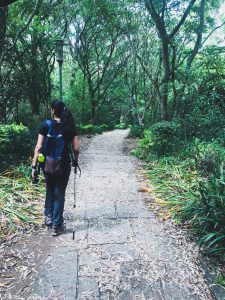
The descent takes about the same time as getting on top, which is about an hour, although I took a few minutes longer due to my bad knees. It was 3.30pm at the base of the Nandi hills, and getting back to Bangalore city wasn’t too much of a problem leaving the part near the Hebbal flyover (there is always such slow-moving traffic here) We made it just before the peak hour traffic could begin.
A nice cup of coffee back home was what made the perfect end to this day’s adventure 🙂

